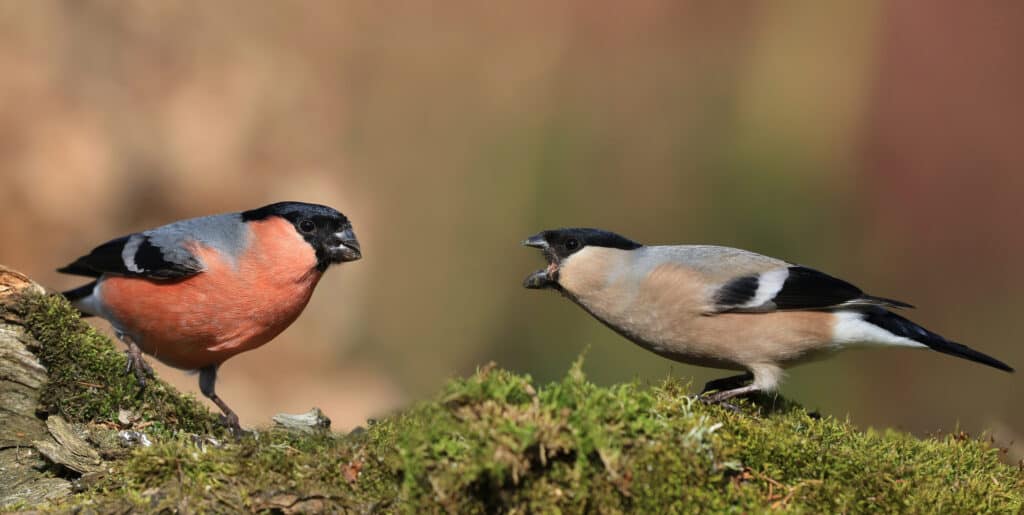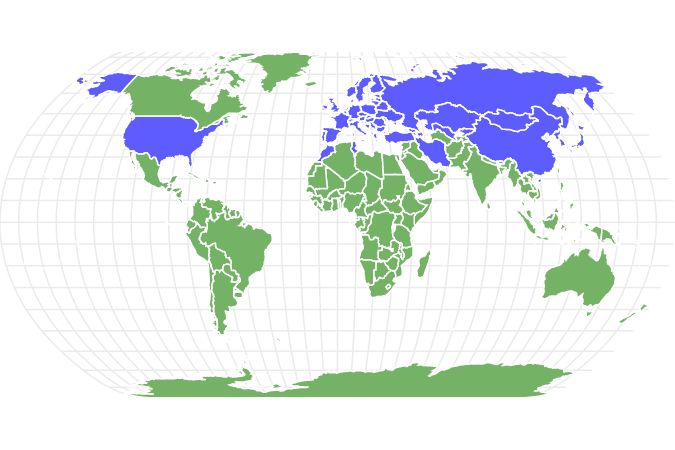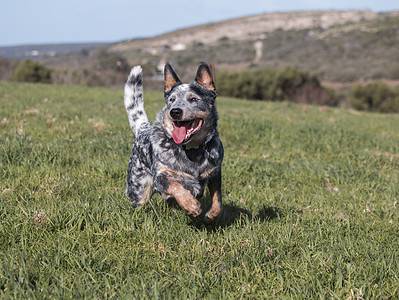Eurasian Bullfinch
Pyrrhula pyrrhula
The shy eurasian bullfinch prefers to forage very close to cover.
Advertisement
Eurasian Bullfinch Scientific Classification
- Kingdom
- Animalia
- Phylum
- Chordata
- Class
- Aves
- Order
- Passeriformes
- Family
- Fringillidae
- Genus
- Pyrrhula
- Scientific Name
- Pyrrhula pyrrhula
Read our Complete Guide to Classification of Animals.
Eurasian Bullfinch Conservation Status
Eurasian Bullfinch Facts
- Prey
- Invertebrates, mainly for feeding chicks in the nest
- Name Of Young
- Chicks
- Group Behavior
- Pair
- Flocks
- Fun Fact
- The shy eurasian bullfinch prefers to forage very close to cover.
- Estimated Population Size
- Estimated 38 - 65 million mature individuals
- Biggest Threat
- Habitat degradation
- Most Distinctive Feature
- Rosy red breast and cheeks in males
- Distinctive Feature
- Black cap (not present in juveniles); black wings and tail; white wing bars; white rump; gray mantle on males, brown on females and juveniles; buff breast and cheeks on females and juveniles; short, stout bill
- Other Name(s)
- Bullfinch, common bullfinch
- Temperament
- Shy
- Wingspan
- 10 inches
- Incubation Period
- 12 - 14 days
- Age Of Fledgling
- 16 - 18 days
- Habitat
- Mixed woodland, especially hedgerows; edge; parks and gardens; orchards
- Predators
- Sparrowhawks, jays, magpies, stoats, weasels
- Diet
- Herbivore
- Lifestyle
- Diurnal
- Flock
- Pair
- Favorite Food
- Seeds, buds, shoots, fruits
- Special Features
- Food sacs in floor of mouth allow bird to store food
- Location
- Europe, Asia, Northern Africa, Alaska
- Average Clutch Size
- 5
- Group
- Bellowing
- Nesting Location
- In a large bush with thick cover
- Migratory
- 1
Eurasian Bullfinch Physical Characteristics
- Color
- Brown
- Grey
- Red
- Black
- White
- Cream
- Pink
- Multi-colored
- Skin Type
- Feathers
- Lifespan
- 2 to 5 years
- Weight
- 0.74 to 0.95 ounces
- Length
- 6 to 7 inches
- Age of Sexual Maturity
- 1 year
- Venomous
- No
- Aggression
- Low
View all of the Eurasian Bullfinch images!
Eurasian bullfinches are extremely shy and don’t like to forage away from cover!
Even though Eurasian bullfinches are brightly colored, they are not easy birds to spot. They prefer to avoid exposure, sticking close to dense cover and foraging within a short distance of their perch. They frequent large bushes, hedgerows, and trees along the edge of a forest. Although they are mainly herbivores, they do catch invertebrates, mainly for feeding their chicks. Their thick neck is reminiscent of a bull, but these chunky little birds are known as shy and unobtrusive. Their soft call sounds a lot like a human whistle. They eat mainly seeds in the winter, but their love of flower and leaf buds that appear in the spring has earned them a bad reputation among orchard owners.
Incredible Eurasian Bullfinch Facts
- Eurasian bullfinches are also known as common bullfinches or simply bullfinches.
- These birds comprise nearly a dozen subspecies with a variety of colorations.
- Males perch higher in trees than females, possibly to guard them as they tend to the nest.
- Juveniles don’t have the characteristic black cap and face.
- The scientific name of the Eurasian bullfinch is derived from a Greek word meaning flame-colored.
- Eurasian sparrowhawks are the main predators of this bird. It attempts to avoid them by staying close to cover.
- Eurasian bullfinches take turns bathing in shallow water so one or more can keep watch for predators.
Where to Find Eurasian Bullfinch
As the name would suggest, the Eurasian bullfinch is primarily native to Europe and Asia. Its breeding range extends from the United Kingdom to Japan. It includes most of Europe and the northern part of Asia and extends south into Iran. Its migratory range extends further south into Asia and the southern portions of Europe. The bird has been spotted in North America, mainly in Alaska. It has also been seen as far south as the northern African nations of Algeria, Morocco, and Tunisia.
Eurasian bullfinches are typically seen in or near forests. They rarely forage far from thick cover and are particularly drawn to hedgerows. They perch high in trees, or low in bushes when they are foraging, staying mostly out of sight. When they do come out of hiding to forage for seeds and other foods, they are quick about their work. They gather as much as they can, as quickly as possible, and make their way back to safety.
Eurasian Bullfinch Scientific Name
The scientific name of the Eurasian bullfinch is Pyrrhula pyrrhula. The word pyrrhula is derived from a Greek word meaning fire-colored, which is an apt description of the bird’s red breast.
The bird was first described by Linnaeus in 1758. Today there are nearly a dozen named subspecies, with many different color variations. P. pyrrhula pyrrhula is the most widely known subspecies, with a rosy-red breast and cheeks and a black cap. The subspecies P. pyrrhula griseiventris differs from the main subspecies in that the male has rosy-red plumage only on its cheeks and chin. The male P. pyrrhula cineracea has no red coloring at all.
Eurasian bullfinches belong to the Fringillidae family, which is comprised of true finches, though many do not have the word “finch” in their names. Grosbeaks, honeycreepers, siskins, crossbills, canaries, and the colorful euphonias are some examples of the more than 200 living species in this family. These birds are all part of the Passeriformes order.
Appearance
The Eurasian bullfinch has a stout appearance with virtually no neck, reminiscent of a bull, for which it was named. This relatively small bird is roughly the size of a house sparrow, but it has a much more chunky, round shape. It has a somewhat long, black tail that it holds straight most of the time. The Eurasian bullfinch measures approximately six to seven inches in length with a wingspan of about ten inches. These birds have an average weight between 0.74 to 0.95 ounces.
This bird’s bill is short, black, and cone-shaped, perfect for collecting and crushing seeds or snipping off buds and shoots.
Eurasian bullfinches are sexually dimorphic with juveniles also differing from adults. Coloration can vary depending on the subspecies. Males of the most common variety have bright, rosy-red feathers on their cheeks, neck, and breast. They have a black cap and face, black eyes, black wings with white bars, and a black tail. They have pinkish-brown legs and feet. Their bright white rump is easily seen while the bird is in flight. Their mantle, or the feathers from the back of their head down their back, between their wings, is a dark, bluish gray.

Male and female Eurasian bullfinches appear to talk things over.
©Monika Surzin/Shutterstock.com
Females have the same coloration on their wings and tail. They have the same black cap and face, and the same white rump. They differ in that the feathers on their breast and cheeks are buff, and those on their mantle are brown. Juveniles are colored similarly to females, but they lack the black cap and face.
Behavior
Eurasian bullfinches are described as shy, quiet, and unobtrusive birds. Their calls can vary, but the call most often heard is a soft whistle, almost like a human. They form monogamous pairs and tend to return to the same area year after year. They travel in flocks of up to 30 birds when migrating.
The Eurasian bullfinch excels in risk management. Research indicates that these birds use multiple strategies to reduce their risk of predation. Perhaps because they are not fast or acrobatic fliers, they prefer to forage within about ten feet of woody cover, such as hedgerows. They are rarely seen on the ground more than about 30 feet from cover.
When these birds bathe in shallow water, which they do throughout most of the year, they do so in groups. They take turns, with one or more birds bathing while others stand guard. Likewise, males of the species tend to perch higher in trees than females for safety. Although they are more exposed, they can guard against predators while the females tend to nest duties.
Eurasian bullfinches have a complicated relationship with humans. They have long been regarded as pests, because they can efficiently strip an orchard of buds, causing huge losses. Although birdwatchers enjoy spotting the round, colorful birds, they are not easy to find. In fact, even though Eurasian bullfinches love seeds, they rarely visit bird feeders. The population of this species has been declining for decades, pitting conservationists against the agriculture industry.
Diet
Eurasian bullfinches are mainly herbivores, but do sometimes catch invertebrates, usually to feed their chicks. Adults eat a variety of seeds, buds, shoots, and fruits. Their diet changes with the seasons and the availability of different foods. They are particularly drawn to the flower buds of fruit trees in the spring. Through the spring as buds disappear, they will eat flowers and emerging shoots. In the summer, their diet switches to mostly seeds and invertebrates, which are primarily fed to their offspring in the nest. They continue to eat seeds and dried fruits, including blackberries, through the winter. However, they rarely spend much time at bird feeders, perhaps because they are placed in open areas that the birds find too risky.
Eurasian Bullfinch Reproduction
Eurasian bullfinches form monogamous pairs that, according to recent research, may mate for life. Mated pairs returning after a winter possibly have an advantage over other individuals. They are able to start reproducing earlier in the season instead of wasting energy searching for a mate. Pairs begin mating as early as late April, and breeding season continues through July. Each pair has two to three broods during this time.
Females of the species build cup-shaped nests made of twigs, roots, moss, and lichens. They line the nests with softer fibers such as hair, grass, and moss. They build the nest in a large bush, usually at least four meters tall by four meters wide. The birds always conceal the nest in thick cover. Once the nest is complete, the female lays four to six eggs, which are pale blue with reddish-brown spots.
Incubation takes 12 to 14 days. Once the chicks are hatched, it takes them approximately 15 to 18 days to fledge. The female handles most of the nest duties. Males guard the nest and feed their mate seeds that they collect in special sacs in the floor of their mouths. Juveniles stay nearby, usually perching in between the males on the upper branches of trees and the females on the lower branches. They reach sexual maturity after approximately one year.
Predators
Eurasian sparrowhawks are the primary predators of the Eurasian bullfinch. Agricultural practices in Europe and Asia over the last half a century have decreased the amount of cover needed by the Eurasian bullfinch. Food sources have also decreased as hedgerows and native weeds have been eliminated. With reduced cover and an increased need to venture out for food, these small birds are exposed more than ever to predatory Eurasian sparrowhawks.
Nest predators include corvids, such as crows, magpies, and the Eurasian jay. Mammalian predators such as weasels and stoats also target Eurasian bullfinches at the nest or on the ground. Both are excellent climbers and incredible hunters capable of catching and eating full grown birds.
Lifespan of the Eurasian Bullfinch
These birds do not live long in the wild. Their lifespan averages only two to five years. The primary threat to Eurasian bullfinches is habitat degradation. Agricultural practices since the 1960s have greatly reduced the dense cover that these birds depend on. As hedgerows and nearby wild seeds disappeared, the species became more at risk of predation. Their reputation as orchard pests has caused them to be targeted by humans as well.
The IUCN Red List of Threatened Species lists the Eurasian bullfinch as a species of least concern. Its range is very large, and the population is estimated to be between 38 and 65 million mature individuals. However, the population has been declining for decades. Conservation efforts have only recently been undertaken to help ensure the long-term survival of this species.
Similar Animals
- Purple Finch – This familiar bird lives throughout the United States and southern Canada. The intensity of its coloration depends on its diet.
- Pine Siskin – These black and yellow, sometimes greenish, birds are members of the Fringillidae family native to North America.
- Rose-breasted Grosbeak – This bird and the Eurasian bullfinch have similar coloration. Both are members of the Fringillidae family. The rose-breasted grosbeak is native to North, Central and South America.
Eurasian Bullfinch FAQs (Frequently Asked Questions)
What does the Eurasian bullfinch look like?
The Eurasian bullfinch has a black cap and face, black eyes, black wings, and a black tail. Its wings have white bars, and its rump is bright white. Its legs and feet are pinkish-brown. Males have a rosy-red breast, cheeks, and neck. Their mantle is a dark, bluish gray. Females have a buff-colored breast, cheeks and neck, and their mantle is brown. Juveniles look a lot like females, except they do not have the black cap and face.
How big is the Eurasian bullfinch?
Eurasian bullfinches are small birds, about 6 to 7 inches in length and weighing from 0.74 to 0.95 ounces. They are roughly the same size as a house sparrow, but have a chunkier shape.
What is the Eurasian bullfinch’s wingspan?
The Eurasian bullfinch has a wingspan of approximately 10 inches and its wings feature white bars.
How fast do Eurasian bullfinches fly?
Eurasian bullfinches are not strong fliers. They are neither particularly fast nor acrobatic. Therefore, they tend to stick very close to cover when they have to go to the ground.
How many varieties of Eurasian bullfinches exist?
There are nearly a dozen subspecies of Eurasian bullfinches. They vary in coloration, and some have very limited range.
What makes the Eurasian bullfinch special?
Eurasian bullfinches are masters of risk management. Everything they do seems geared toward safety, from where they build their nests and how much time they spend on the ground to their soft calls and reluctance to visit bird feeders. They love to hide in deep cover and you aren’t likely to spot them in breeding season.
Where do Eurasian bullfinches live?
Eurasian bullfinches live throughout most of Europe and northern Asia, from the United Kingdom across to Japan. They have been spotted as far south as northern Africa in Algeria, Tunisia and Morocco, and in North America mainly in Alaska.
Do Eurasian bullfinches migrate?
Eurasian bullfinches do migrate. They form flocks of up to 30 birds when migrating back and forth from their breeding range to their winter grounds.
What do Eurasian bullfinches eat?
Eurasian bullfinches eat mainly seeds, buds, shoots and rootlets, and fruits. They also catch invertebrates, mostly to feed their chicks.
How many eggs does the Eurasian bullfinch lay?
Eurasian bullfinches lay between 4 and 6 eggs in each brood. They produce 2 to 3 broods per year.
When do Eurasian bullfinches leave the nest?
The incubation period for Eurasian bullfinches is 12 to 14 days. After they hatch, the chicks stay in the nest until they fledge at 16 to 18 days.
When do Eurasian bullfinches reach sexual maturity?
Eurasian bullfinches reach sexual maturity at approximately one year of age.
How long do Eurasian bullfinches live?
Eurasian bullfinches only live from 2 to 5 years on average. They are particularly vulnerable to predators due to their bright colors and poor flying ability.
Are Eurasian bullfinches rare?
Most of the subspecies of Eurasian bullfinches are not rare, but their numbers are declining. Habitat degradation and decreasing cover adjacent to food sources are the greatest threats to these birds.
Thank you for reading! Have some feedback for us? Contact the AZ Animals editorial team.
Sources
- Ángel Hernández, Available here: https://avianres.biomedcentral.com/articles/10.1186/s40657-021-00241-0
- Mick Marquiss, Available here: https://www.tandfonline.com/doi/pdf/10.1080/00063650709461451
- Steinar Brandslet, Available here: https://norwegianscitechnews.com/2017/12/bullfinches-stick-together-years/
- IUCN Red List, Available here: https://www.iucnredlist.org/species/22720671/132141969#population

















